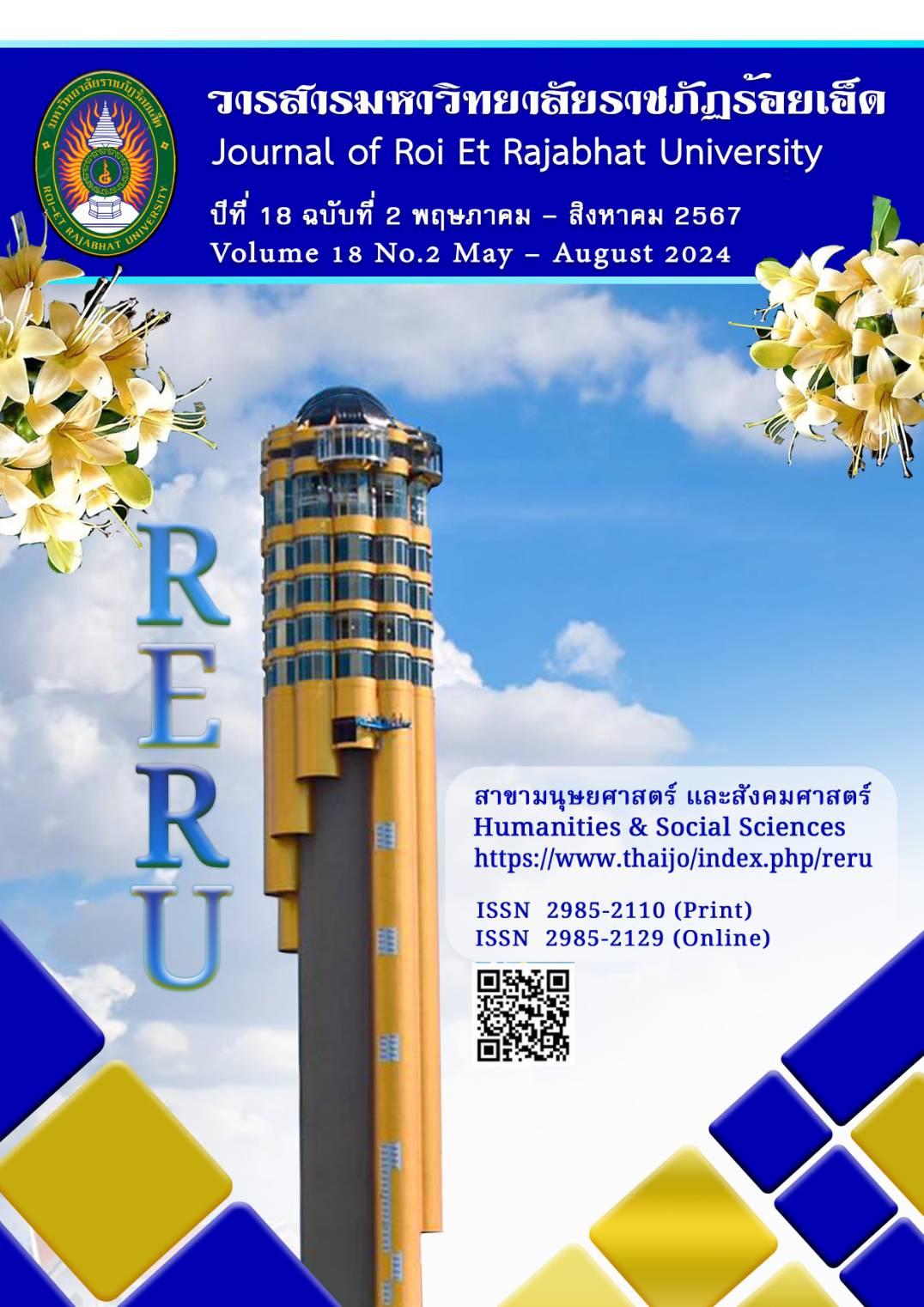The Relationship between Customer Relationship Management and Customer Loyalty of Convenience Stores in Bangkok and Vicinity Area
Keywords:
Customer relationship managementAbstract
The purposes of this research were to study 1) customer relationship management of convenience stores in Bangkok and vicinity areas, 2) customer loyalty of convenience stores in Bangkok and vicinity areas, and 3) the relationship between customer management and customer loyalty of convenience stores in Bangkok and vicinity areas. Research instrument for data collection was a questionnaire. Samples were 401 convenience store customers in Bangkok and vicinity areas by stratified random sampling and convenience sampling according to proportion in each area. Data were analyzed by finding frequency, percentage, mean, standard deviation and Pearson’s Product Moment Correlation Coefficient.
The results of the research found that 1) overall customer relationship management of convenience stores was at a high level. Suggesting useful services was first at a very high level, followed by understanding expectations at a very high level. 2) Convenience store customers' overall loyalty was at a high level. Loyalty in terms of purchase intention was first at a very high level, followed by loyalty in word-of-mouth behavior was at a high level. 3) Customer relationship management of convenience stores had a relationship in the same direction convenience store customers' overall loyalty and word-of-mouth behavior were high, while there was a relationship in the same direction with other behavior were at a moderate level. And all aspects of customer relationship management except for recommending useful services were a very high correlation in the same direction as word-of-mouth behavior with statistically significant at the 0.05 level.
References
ชัชญาภา ศักดิ์ศรี. (2561). การบริหารลูกค้าสัมพันธ์มีผลต่อความภักดีต่อการใช้บริการห้างสรรพสินค้า กรณีศึกษาห้างสรรพสินค้าแห่งหนึ่ง. สารนิพนธ์ การจัดการมหาบัณฑิต. กรุงเทพฯ: มหาวิทยาลัยมหิดล.
ปาลิดา ศรีศรกำพล. (2564). การศึกษาตัวแบบที่ส่งผลต่อความภักดีของร้านค้าปลีกออนไลน์กลุ่มร้านสะดวกซื้อห้างสรรพสินค้า และซุปเปอร์มาร์เก็ต. วารสารวิชาการสังคมศาสตร์เครือข่ายวิจัยประชาชื่น, 3(3), 42-58.
ยุทธพงษ์ พิมพ์พิพัฒน์. (2559). ความภักดีของลูกค้าตามแนวทางการบริหารลูกค้าสัมพันธ์ของลูกค้าร้านสะดวกซื้อ. วารสารวิชาการ มทร.สุวรรณภูมิ (มนุษย์ศาสตร์และสังคมศาสตร์), 1(1), 14-28.
วลัย ซ่อนกลิ่น. (2561). ส่วนประสมการค้าปลีกที่มีผลต่อความจงรักภักดีในการใช้บริการร้านสะดวกซื้อของผู้บริโภคในเขตกรุงเทพมหานคร. วารสารมนุษยศาสตร์และสังคมศาสตร์ มหาวิทยาลัยราชภัฏสุรินทร์, 20(1), 109-121.
วิจัยกรุงศรี ธนาคารกรุงศรีอยุธยา. (2565). แนวโน้มธุรกิจ/อุตสาหกรรมปี 2566-2568: ธุรกิจร้านค้าปลีกสมัยใหม่. สืบค้นเมื่อ 14 ตุลาคม 2567, จาก https://www.krungsri.com/th/research/industry/industry-outlook/wholesale-retail/modern-trade/io/modern-trade-2022
วิมลมาศ บัวเพชร และไกรชิต สุตะเมือง. (2556). ปัจจัยด้านการจัดการลูกค้าสัมพันธ์ที่มีอิทธิพลต่อความภักดีต่อแบรนด์ "เทสโก้ โลตัส" ของผู้บริโภคในเขตกรุงเทพมหานคร. วารสารการตลาดและการสื่อสาร, 1(1), 65-80.
สาธิดา ภัสสรโยธิน. (2560). กลยุทธ์การบริหารงานลูกค้าสัมพันธ์ของเทสโก้ โลตัส. การค้นคว้าอิสระ การบริหารสื่อสารมวลชน. กรุงเทพฯ: มหาวิทยาลัยธรรมศาสตร์.
สำนักงานสถิติแห่งชาติ. (2565). สถิติประชากร. สืบค้นเมื่อ 14 ตุลาคม 2567, จากhttp://statbbi.nso.go.th/Staticreport/page/sector/th/01.aspx
BLT Bangkok. (2021). ผู้บริโภคมากกว่าครึ่ง เปรียบเทียบข้อมูลสินค้าของซูเปอร์มาร์เก็ตคู่แข่งก่อนตัดสินใจซื้อ. สืบค้นเมื่อ 14 ตุลาคม 2567, จาก https://www.bltbangkok.com/lifestyle/33833/
Brandage Online. (2562). 4 วิธีรับมือ เมื่อการเซ็กเม้นต์ลูกค้าแบบเดิมๆ เริ่มใช้ไม่ได้ผล. สืบค้นเมื่อ 14 ตุลาคม 2567,
จาก https://www.brandage.com/article/16116
Marketing Oops. (2020). 3 เทรนด์กลยุทธ์ CRM 2020 “Aggregator Business – O2O – Direct to Customer”.
สืบค้นเมื่อ 14 ตุลาคม 2567, จาก https://www.marketingoops.com/news/biz-news/customer-relationship-management-tool-for-future/
Animashaun, A., Tunkarimu, T. I. and Dastane, O. (2016). Customer Perceived Value Towards Convenience Stores in Malaysia: The Influence on Customer Satisfaction, Loyalty and Retention. Journal of Marketing and Consumer Behaviour in Emerging Markets, 2(4), 4-27.
Cochran, W. G. (1977). Sampling Techniques (3nd ed.). New York: John Wiley and Sons.
Cronbach, L. J. and Furby, L. (1970). How we should measure" change": Or should we?. Psychological bulletin, 74(1), 68-80.
Cuong, D. T. and Khoi, B. H. (2019). The Relationship between Service Quality, Satisfaction, Trust, and Customer Loyalty A Study of Convenience Stores in Vietnam. Jour of Adv Research in Dynamical & Control Systems, 11(01-Special), 327-333.
Evans, J. D. (1996). Straightforward Statistics for the Behavioral Sciences. USA.: Thomson Brooks/Cole
Hair, J. F., Black, W. C., Babin, B. J., Anderson, R. E. and Black, W. C. (2018). Multivariate Data Analysis (8thed.). New Jersey: Pearson Prentice Hall.
Jin, H., Wang, S., Yang, F. and Xu, H. (2019). Service Convenience and Customer Loyalty: Findings from Convenience Stores in Guangzhou. 5th International Conference on Social Science and Higher Education, 19(336), 935-938.
Lawson-Body, A., and Limayem, M. (2004). The Impact of Customer Relationship Management on Customer Loyalty: The Moderating Role of Web Site Characteristics, Journal of Computer-Mediated Communication, 9(3), 428-448.
LEE, Y. E. and LEE, Y. K. (2022). Impacts of Perceived Innovativeness of Convenience Store on Consumer Brand Engagement and Store Loyalty. Korean Journal of Franchise Management, 13(1), 35-46.
Likert, R. (1932). A technique for the measurement of attitudes. Archives of psychology, 22(140), 5-55.
Oliver, R. L. (1999). Whence Consumer Loyalty. In Journal of Marketing, 63(Special Issue 1999), 33-44.
Rovinelli, R. J. and Hambleton, R. K. (1977). On the use of content specialists in the assessment of criterion-referenced test item validity. Dutch Journal of Educational Research, 1(2), 49-60.
Wu, S. I. and Lin, H. F. (2014). The Correlation of CSR and Consumer Behavior: A Study of Convenience Store. International Journal of Marketing Studies, 6(6), 66-80.
Zeithaml, V. A., Berry, L. L. and Parasuraman, A. (1996). The behavioral consequences of service quality. Journal of Marketing, 60(2), 31.
Downloads
Published
How to Cite
Issue
Section
License
Copyright (c) 2024 Roi Et Rajabhat University

This work is licensed under a Creative Commons Attribution-NonCommercial-NoDerivatives 4.0 International License.
บทความที่ได้รับการตีพิมพ์เป็นลิขสิทธิ์ของวารสารมหาวิทยาลัยราชภัฎร้อยเอ็ด
ข้อความที่ปรากฏในบทความแต่ละเรื่องในวารสารวิชาการเล่มนี้เป็นความคิดเห็นส่วนตัวของผู้เขียนแต่ละท่านไม่เกี่ยวข้องกับมหาวิทยาลัยราชภัฎร้อยเอ็ด และคณาจารย์ท่านอื่นๆในมหาวิทยาลัยฯ แต่อย่างใด ความรับผิดชอบองค์ประกอบทั้งหมดของบทความแต่ละเรื่องเป็นของผู้เขียนแต่ละท่าน หากมีความผิดพลาดใดๆ ผู้เขียนแต่ละท่านจะรับผิดชอบบทความของตนเองแต่ผู้เดียว





